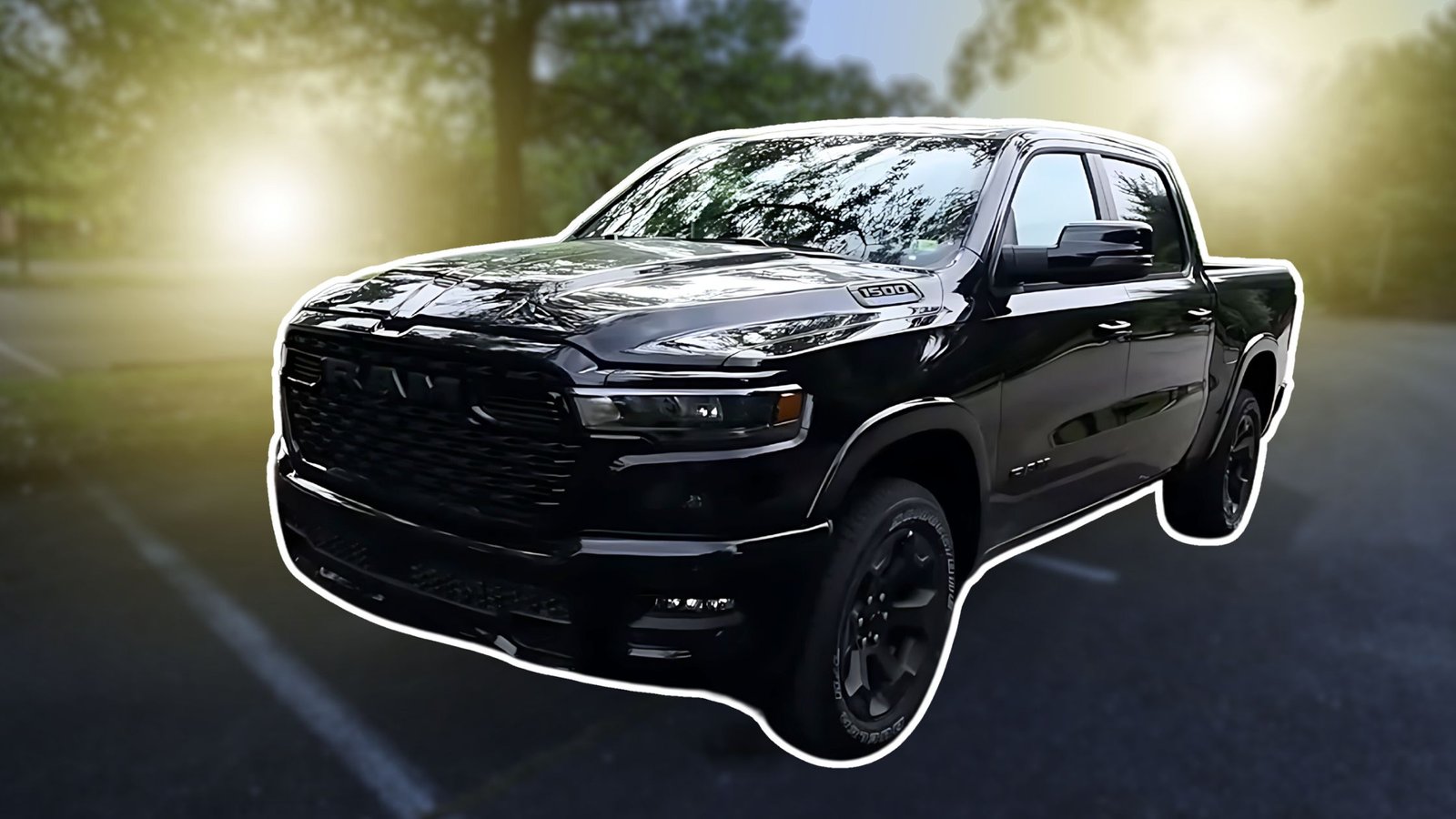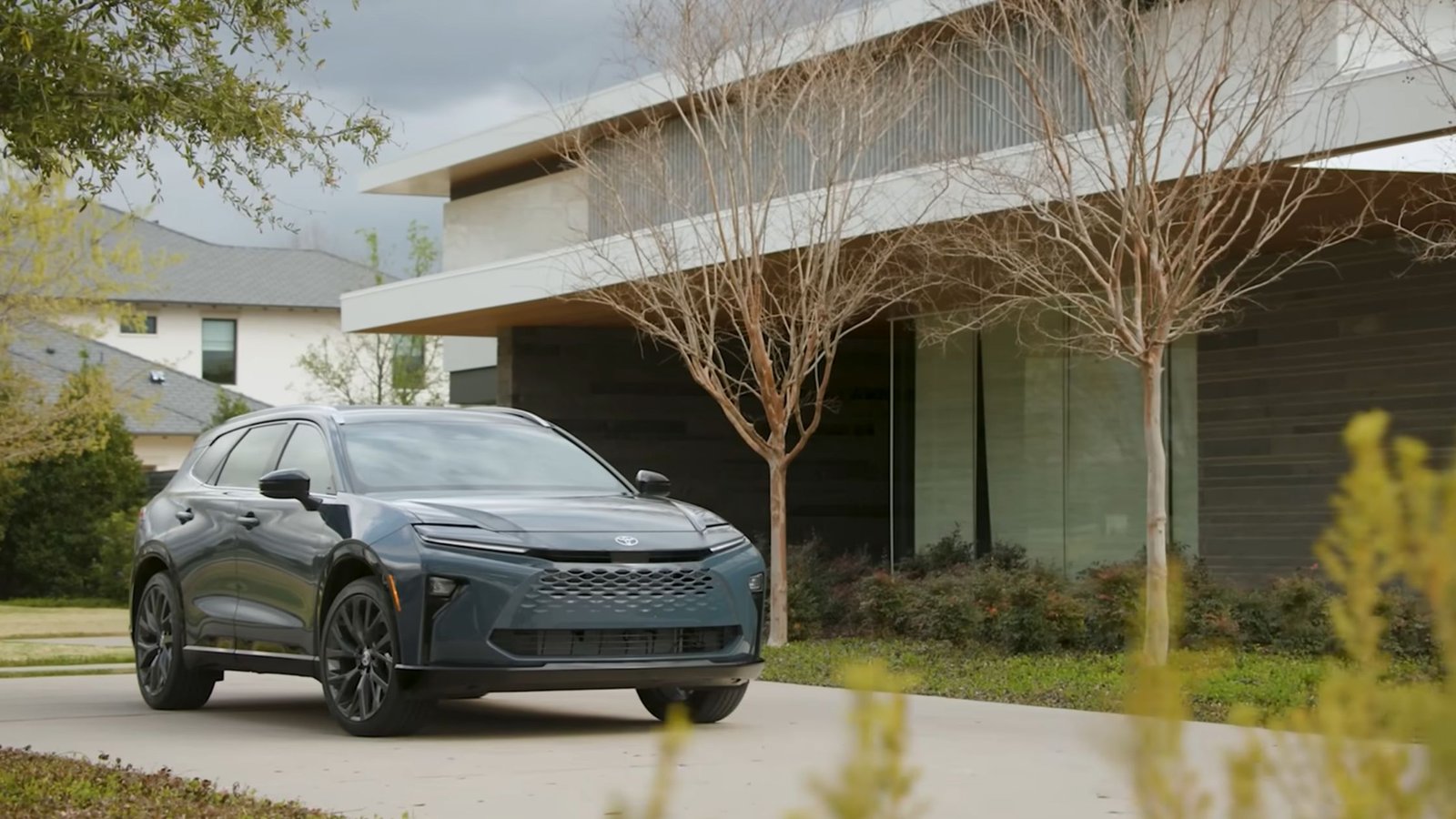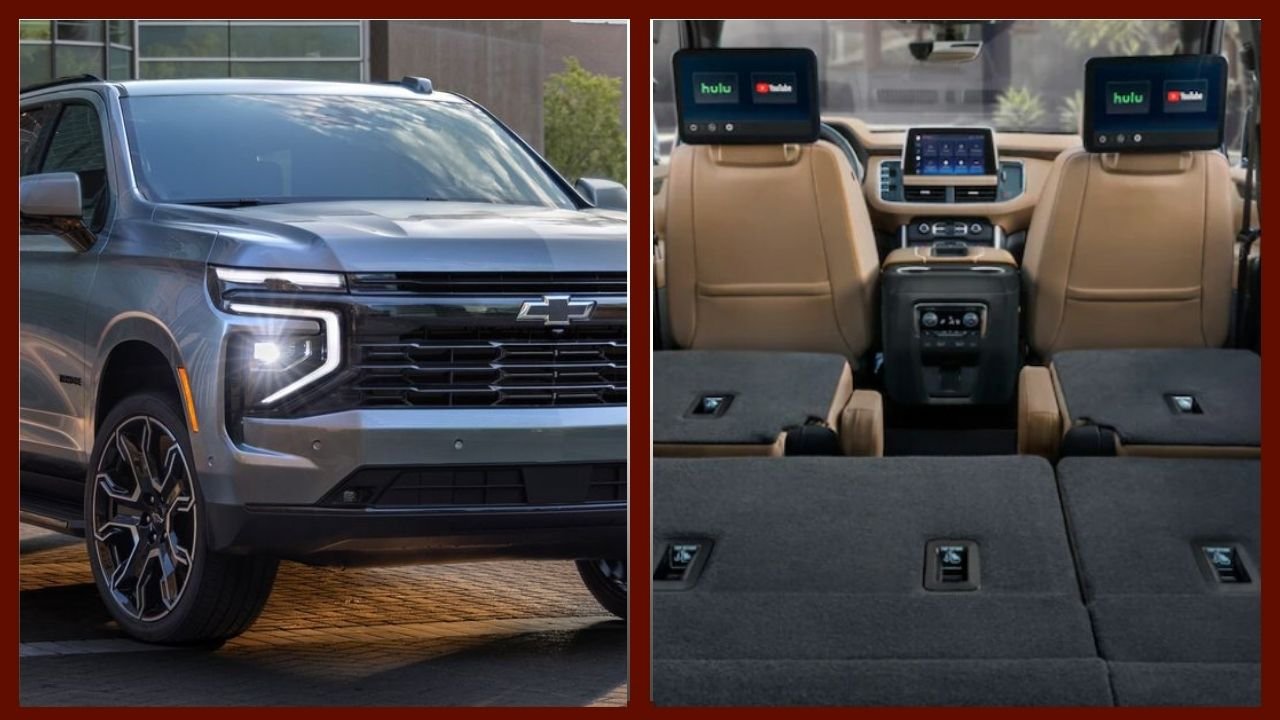Which Muscle Car Fits You Best? Dodge Charger vs. Dodge Challenger
June 5, 2024 | by
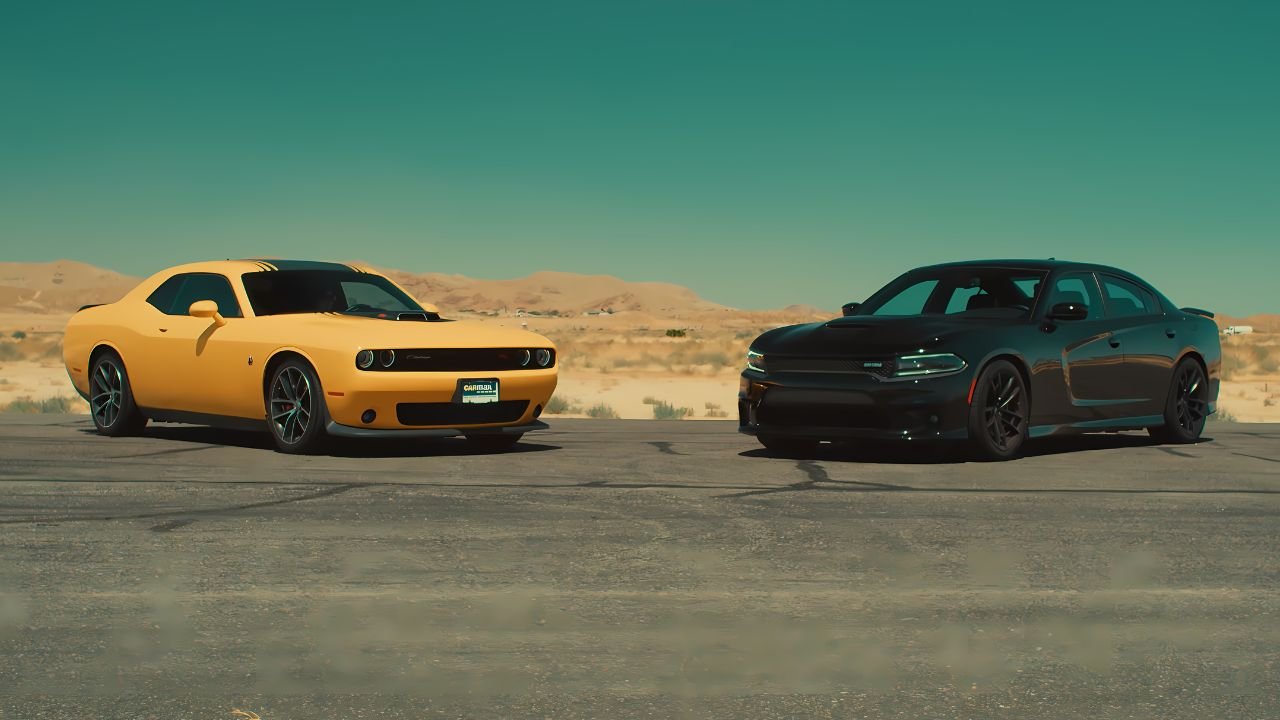
Dodge’s Charger and Challenger are modern muscle cars based on the famous performance cars of the late 60s and early 70s. Both are available with power plants ranging from six cylinders to the fantastic Hellcat Hemi. But which one is right for you? Let’s find out.
Hi, I’m Andrew, and i am from Neftin Editorial Team, where our team of experts tests more than 300 cars every year. We’ve partnered with CarMax, who buy, sell, and appraise a ton of muscle cars every year.

We’ve been given a challenge: take the 2017 Dodge Charger 392 Daytona and the 2018 Dodge Challenger 392 Scat Pack, match them up where it counts, and have a little fun along the way.
While we’re at it, we’ll try to figure out which one of these mighty Mopars is right for you. If you’re the type of person who likes to dig into the specs, and these cars have a lot of interesting specs to dig into, click the link below for a full article.
The Origins of the Dodge Charger and Challenger
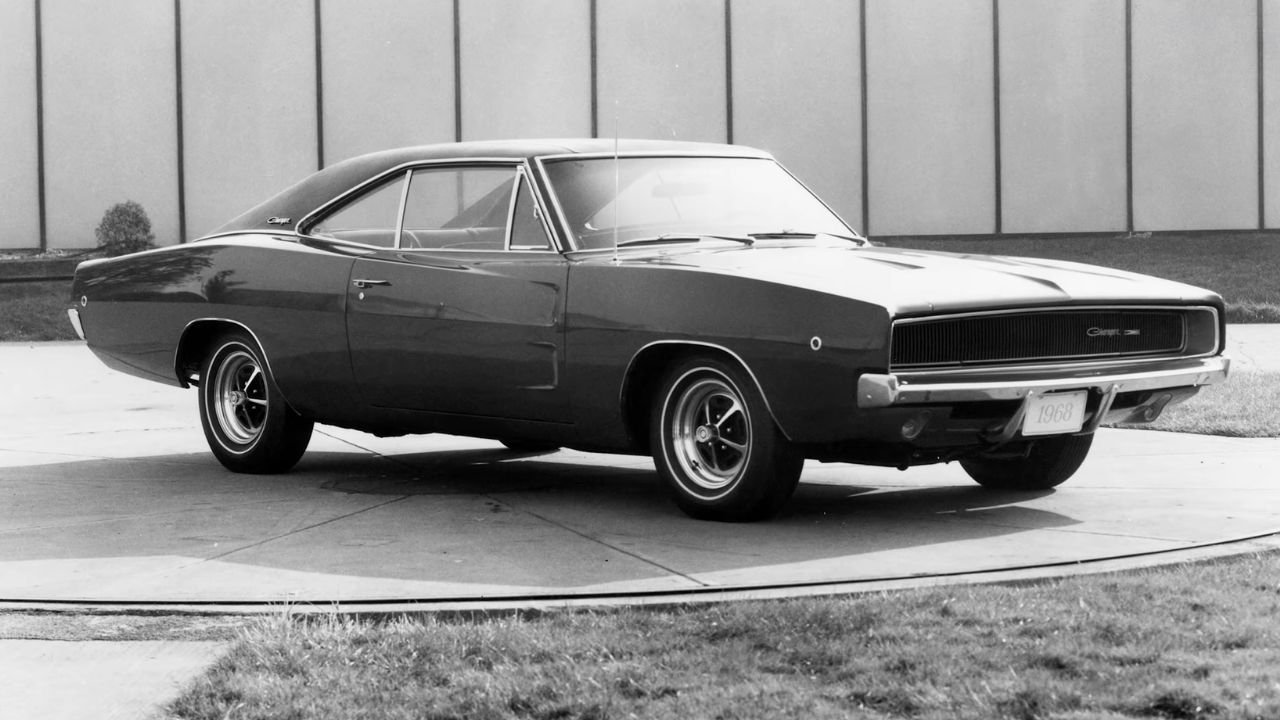
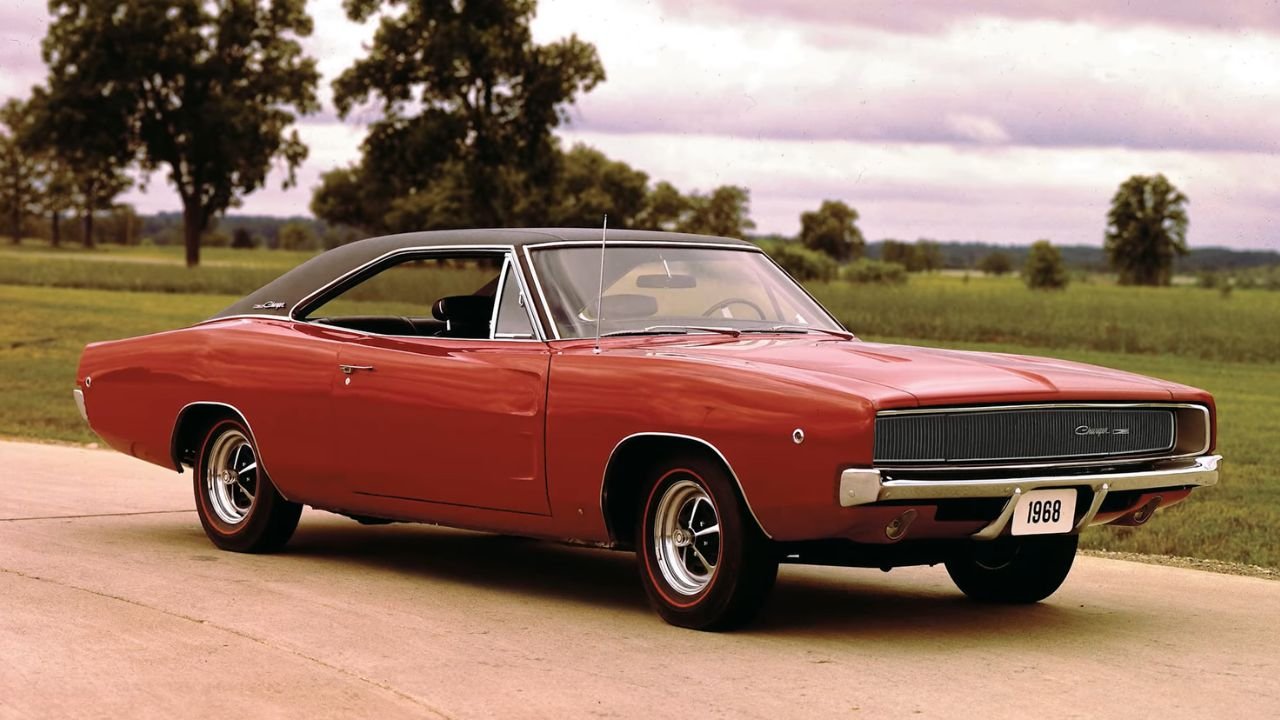
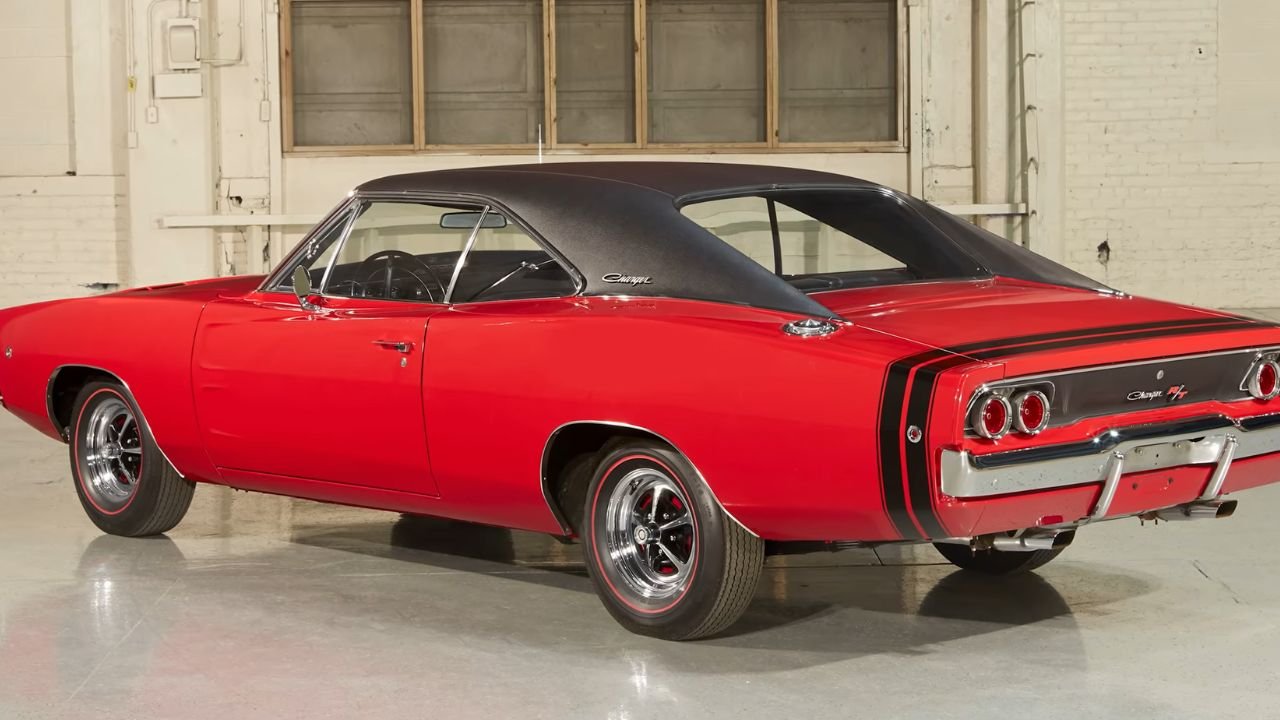
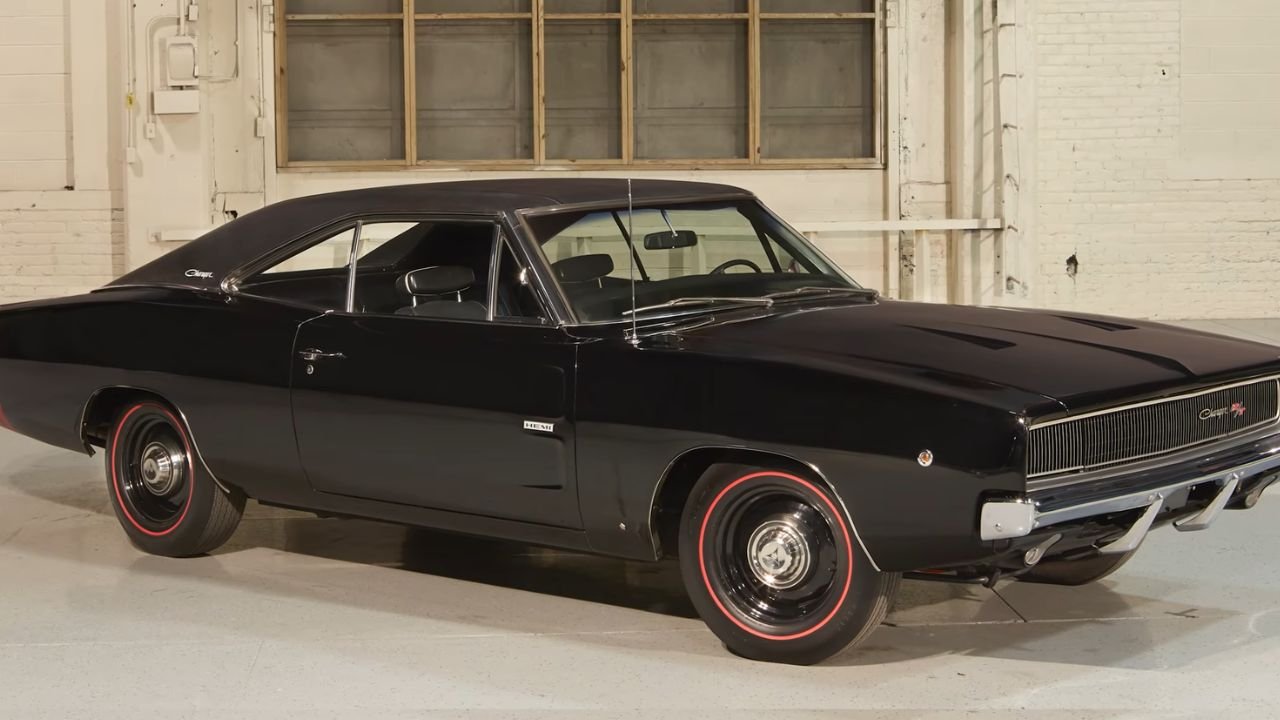
Dodge first introduced the Charger in 1966, and it quickly became one of the stars of the muscle car era. The Challenger would come along a few years later, and over the decades, there was a lot of side-by-side competition between the two. There was even a Carol Shelby version of the Charger. Dodge finally reimagined the Charger as a family sedan in 2006, and it has been growing in power and options ever since.
Choosing Your Engine
Today, you can choose the V6-powered Charger in its base form. You can even get it with practical all-wheel drive or go all out with the supercharged V8 under the hood of the 797 horsepower Redeye. But there are plenty of happy middle-ground options as well. The Charger’s big draw, even if you don’t get the big engine, is that it’s a capable family sedan.
Like Chevy’s Camaro and Ford’s Mustang, Dodge styled the Challenger after one of its original pony cars. Of all the retro designs, the Challenger, first introduced in 2008, has stayed closest to the original classic car design.
I can say that with confidence because I own a 1970 Challenger, and these lines are pretty much unchanged. Although the modern Challenger offers a lot of amenities that I would not mind having on my classic.
Personalization and Performance
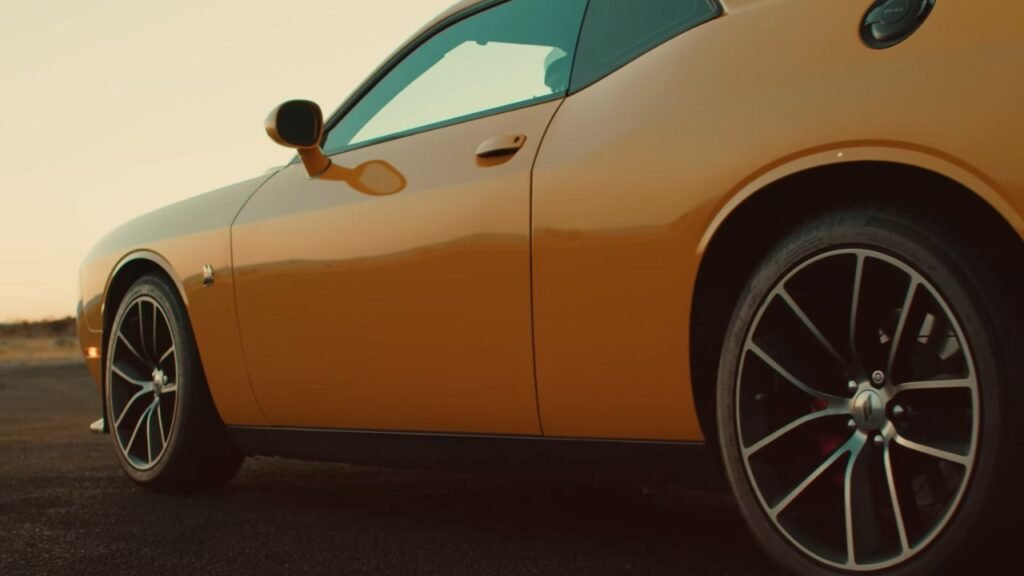
If you check the right boxes, you can have your Challenger with a nearly unbelievable 807 horsepower, but there’s plenty of power all the way down the lineup.
The Challenger’s big selling points are a comfortable interior, a ton of personalization options, wild paint colors, graphics packages, different hoods, and wheels. No matter which Challenger you choose, it’s going to stand out in a crowd.
If you’re looking for a daily driver that can handle some family duties and be a fun weekend car, you’d be happy with either of Dodge’s muscle machines. But let’s figure out exactly which one is right for you.
Performance Comparison: Charger vs. Challenger
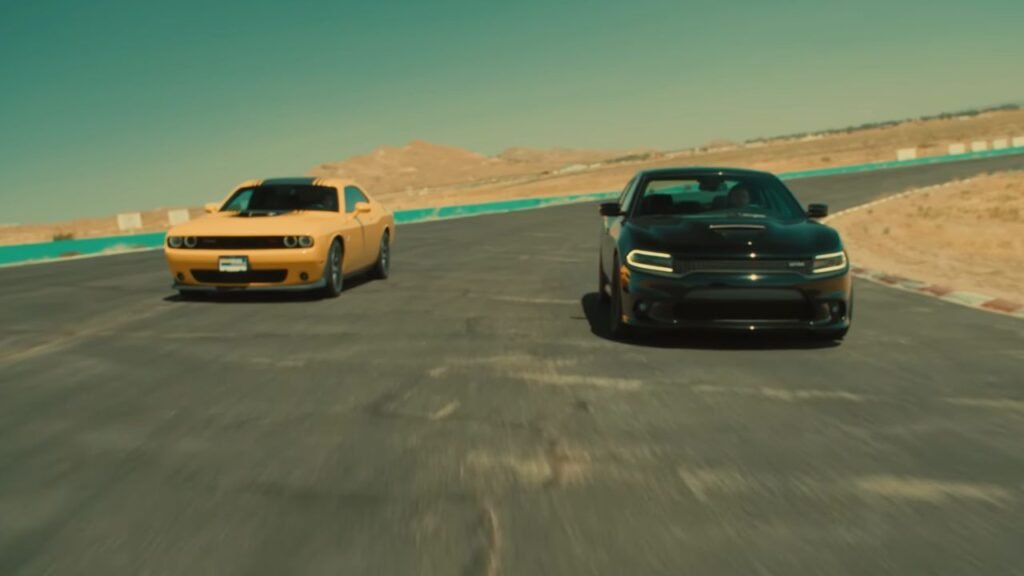
At first glance, our match-up might seem unfair. Look how bright yellow the Challenger is. It has stripes and a hood bulge. It must be way more powerful.
Actually, these two cars are very closely matched under the skin, and the difference in how they present themselves is a good example of how Charger and Challenger offer the same performance with different personalities.
Getting the car ready is pretty simple. I put it in the sport setting, which adjusts the throttle response a little bit and the stability control. It doesn’t turn it totally off, but it doesn’t have it be quite as quick to come in, so I get a little bit of tire spin.
Honestly, I’m pretty sure she’s going to win. Alana’s got a lot more drag experience than I do, and she’s got a car that’s faster. So all she’s got to do is put her foot down in a way that doesn’t spin the rear tires, and she’ll end up there.
Driving Experience and Interior

Now that we’ve had some fun, we should take a closer look at the two cars we have here today. Let’s start off with the interior of the 2017 Dodge Charger 392 Daytona. This is a large interior with lots of space, a big center console, enough room for your smartphone, a couple of big water bottles, and big door pockets too.
There are nice soft touch points for your elbows. The steering wheel feels good in your hands, and even though there are a few plasticky bits that I’m not a huge fan of, this is a really nice interior for the class. Considering the competition, this feels darn near luxury.
Now, this being the 392, there are some nice extra bits you get, like these faux suede and leather seats. They’re ventilated and heated up front, heated in the rear. There are some extra USB ports, and there’s even illuminated cup holders. So fancy. Look how big these seats are.
They’re comfortable, wide, and plush, and even though this is more of a road trip straight line speed kind of car, there’s good bolstering for moving through the corners and holding you in place.
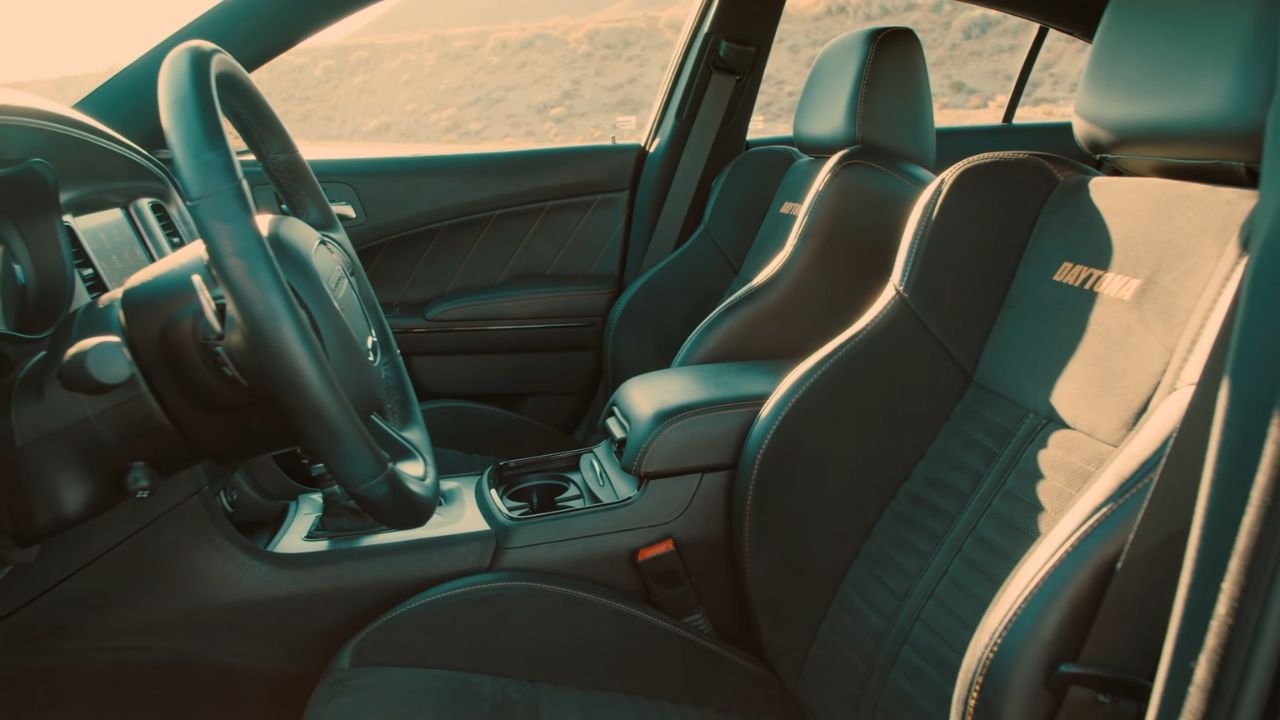
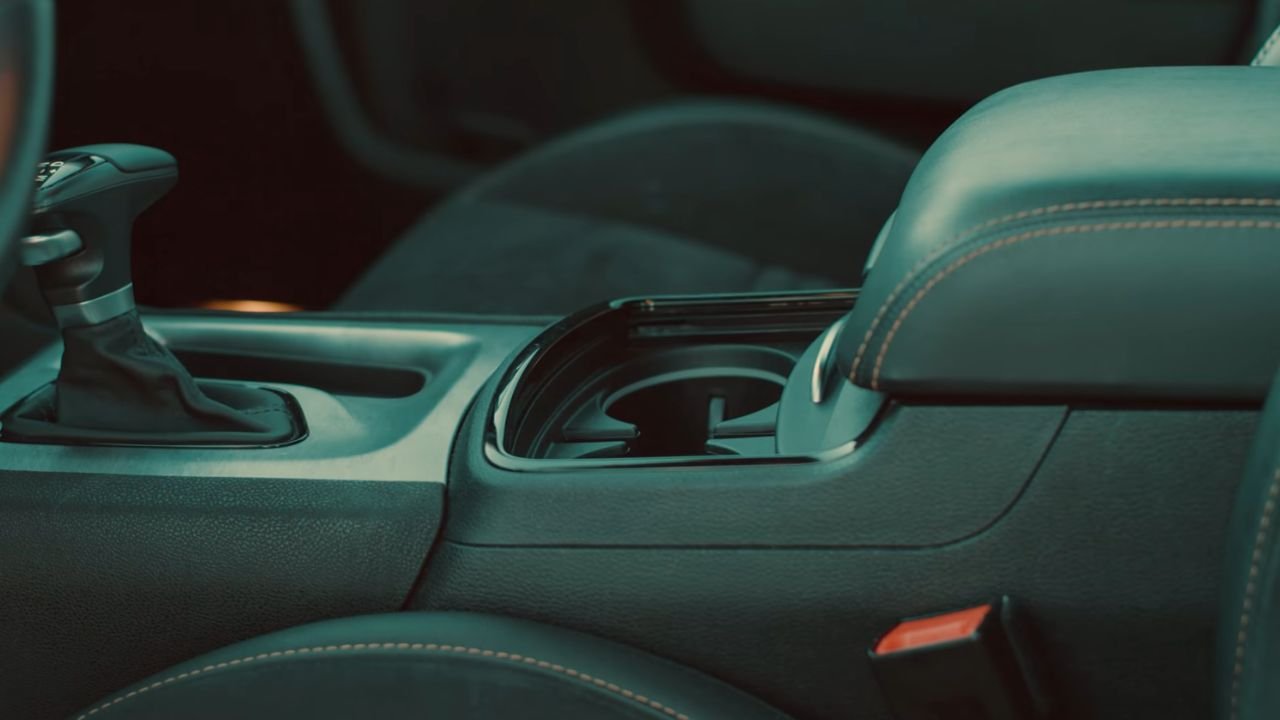

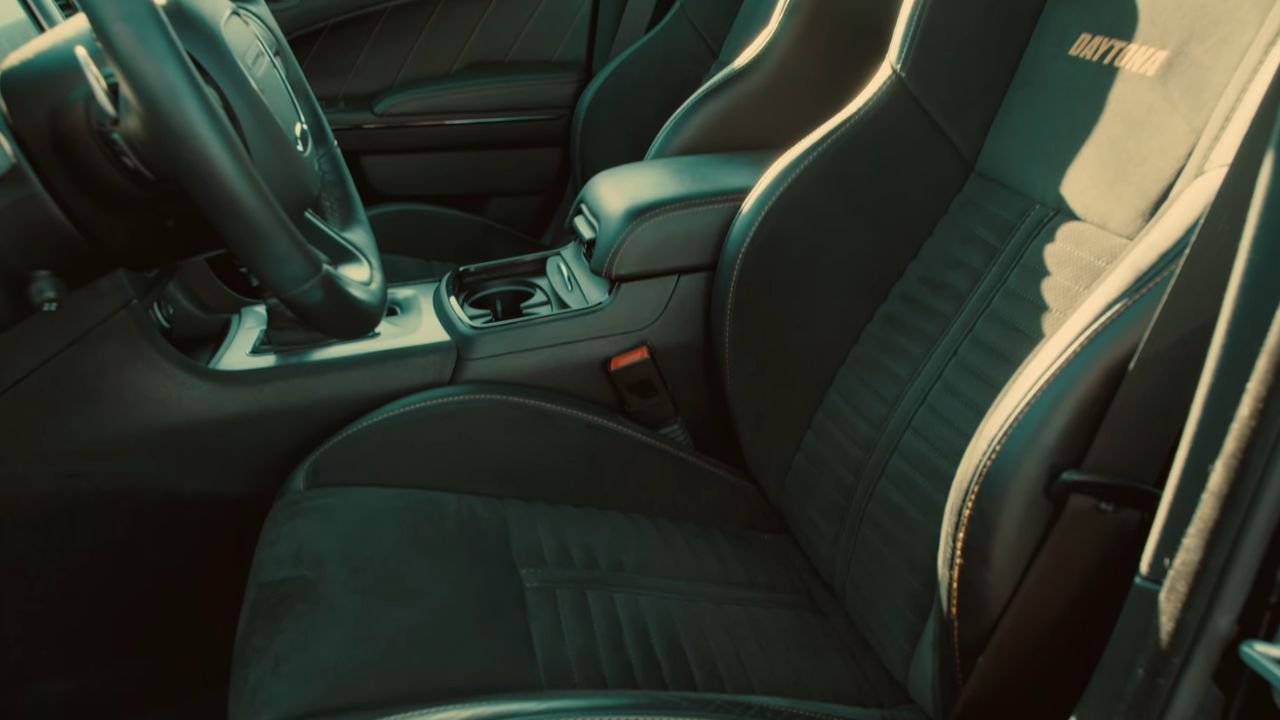
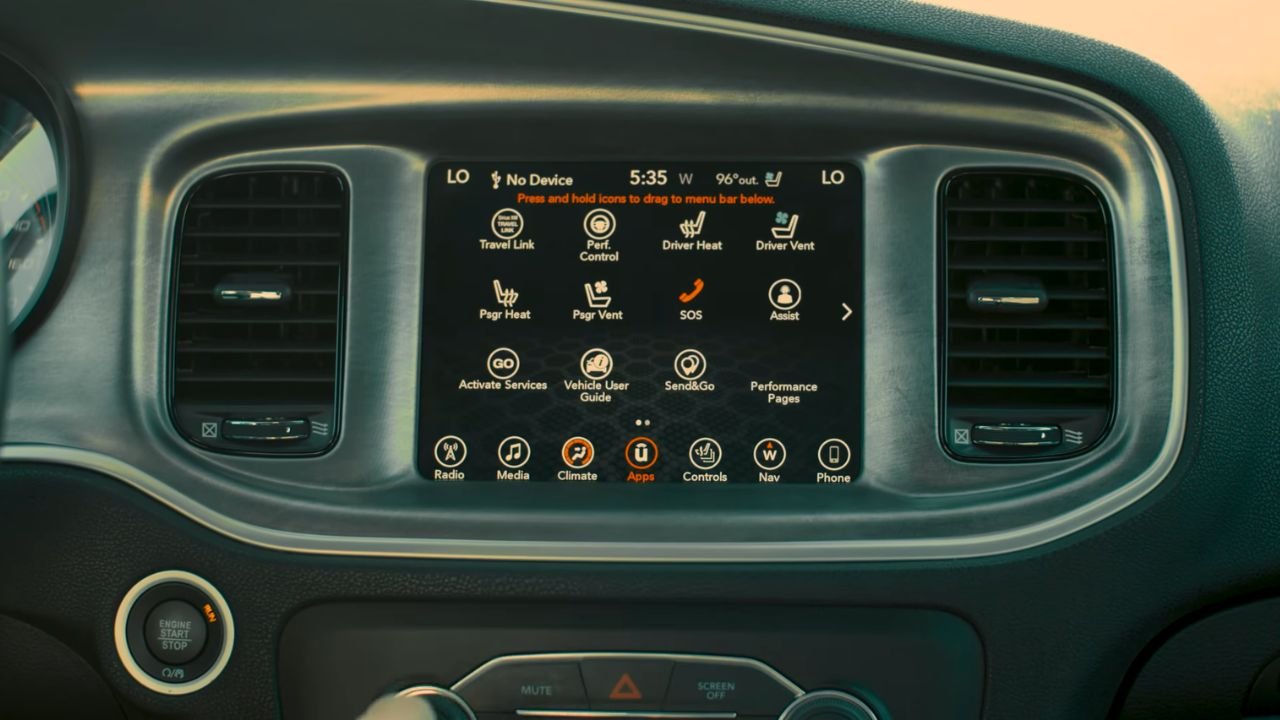
Even the back seats are plush and roomy. I can sit behind myself just fine, and I don’t have to fold the front seats to get in, unlike the Challenger. There’s a set of doors back here.
Exterior and Features
As you move up the trim level ladder with the Charger, you get larger wheels, and with this 392, you get 20-inch wheels. Thankfully though, even though there’s a pretty thin sidewall, the tires don’t transfer a lot of road imperfections into the cabin. Another upgrade the 392 gets is Dodge’s high-performance suspension.
It’s stiff but still pretty good on the highway. If you opted for the premium group back in 2017, the Charger came with a power tilt and telescoping steering wheel, blind spot monitoring, rear cross traffic alert, and even adaptive cruise control.
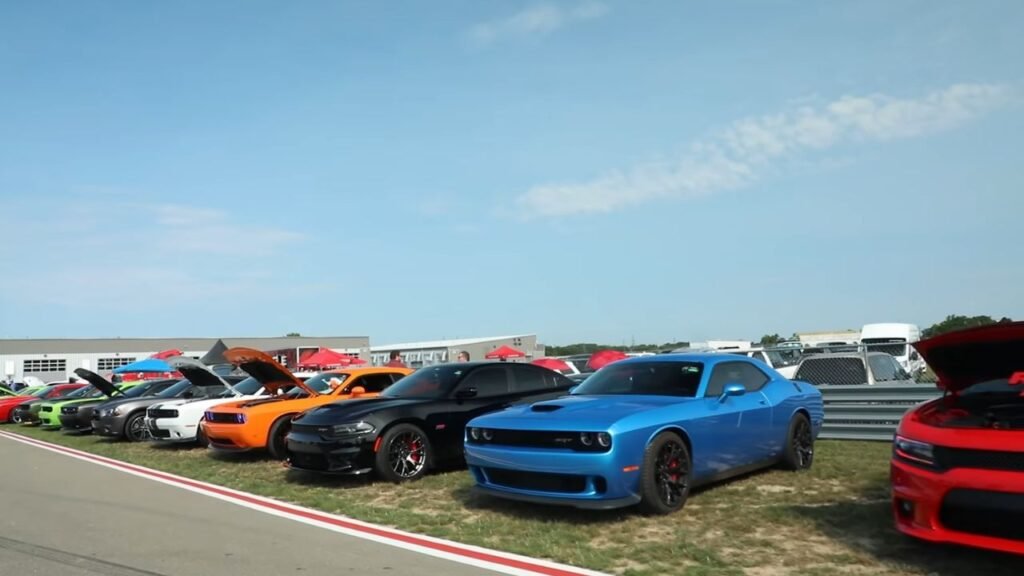
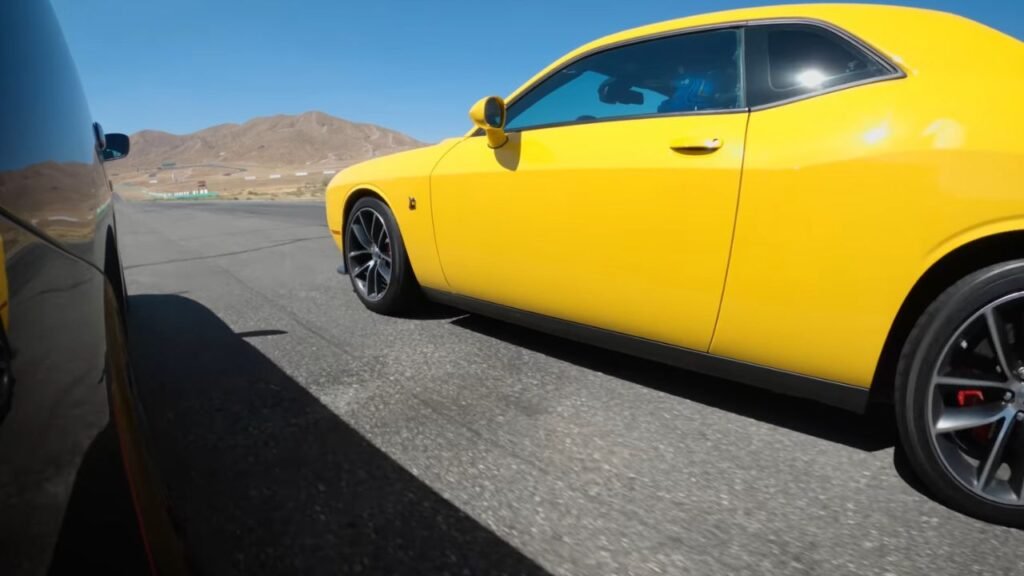

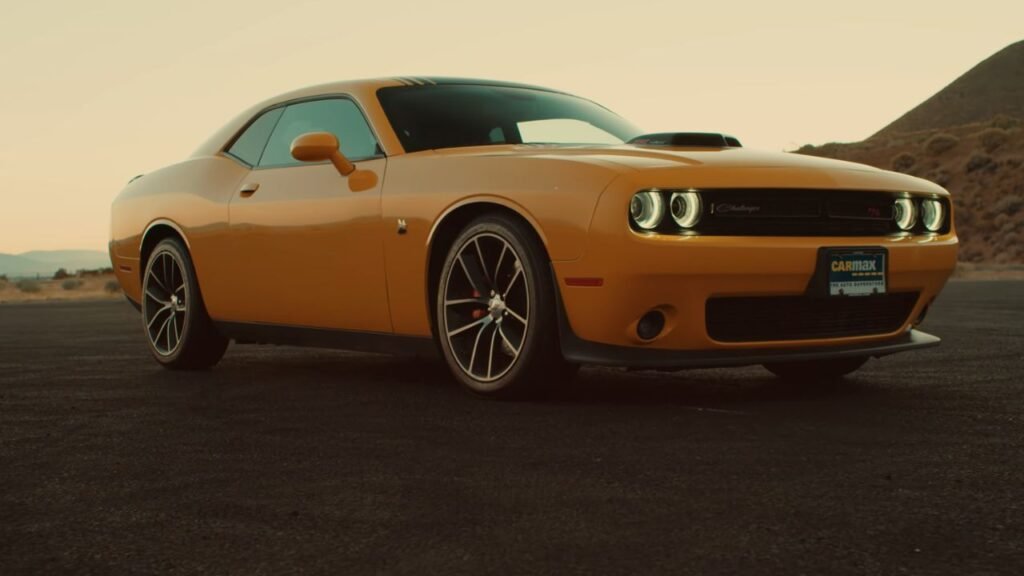
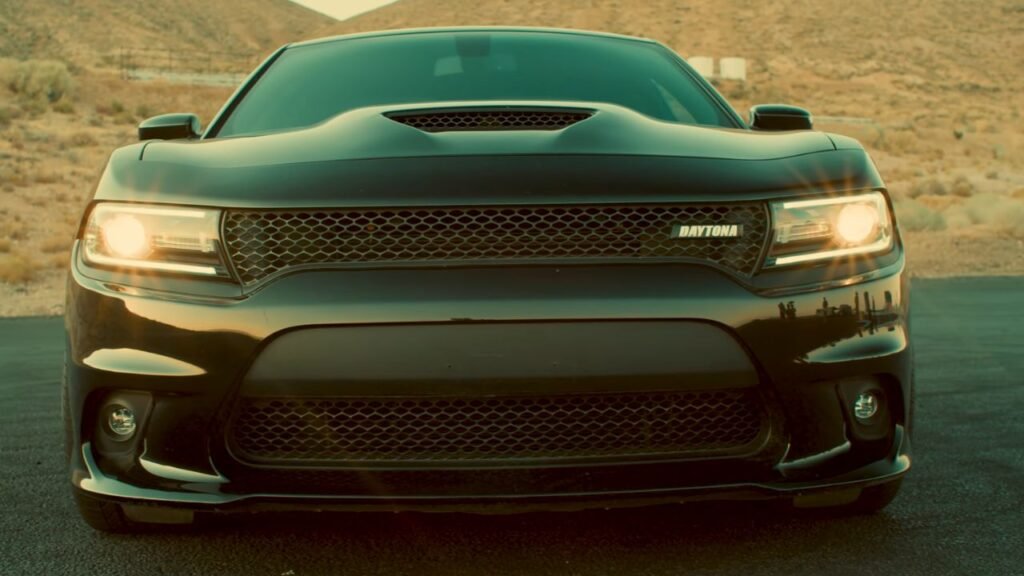

Now, this particular Charger doesn’t have those options, but what it does have is the 8.4-inch Uconnect screen, one of our favorites for its crisp graphics and quick responsiveness.
Also, there’s a nice set of knobs below it to help you keep your eyes on the road while you’re doing things like adjusting the air conditioning. The 6.4-liter V8 under the hood of the 392 Daytona is excellent. It sounds beefy and provides great power across the rev range. Passing power on the highway is there at all times.
On the outside, black on black is a style I like, but I’d prefer a gray or something like that yellow Challenger to keep it looking clean a little bit longer after a wash. With that said, I love the way this car looks. The design feels strong but sleek and modern.
The headlights and taillights are thinner than the OG Charger that was rebooted back in 2006. I think that’s helping the styling age well. More than just a fun daily driver, I would love to come out and see this car in my driveway every day. And out of the two, this is definitely a more family-friendly car. Plus, it’d be pretty fun on a track day.
Challenger Details
Our Challenger is a 2018 392 Scat Pack with a shaker hood. The Scat Pack was a performance marketing move that Dodge did in the late 1960s. It was a play on the slang “scat,” meaning get out of here fast.
It makes more sense when you realize that Frank Sinatra’s Rat Pack was a major mainstream cultural touch point, so people in the 60s would have got the joke. There are a lot of historical references on the modern Scat Pack. The little bee with the wheels doing the burnout comes straight from the Scat Pack marketing materials.
Even the 392 engine is a reference to Chrysler’s first really famous race Hemi, 392 cubic inches. The bubble hood, the shaker, that’s a nod to the original Challenger. It’s not all old school though. Any driver from 1970 would be delighted by all of the high-tech stuff that’s under the retro references.
Soft multi-way adjustable seats, a touchscreen, radio controls on the steering wheel, driver aids like blind spot monitoring and a backup camera – pure sci-fi to a Challenger owner in 1970 and pretty dang cool today too.
Comfort and Practicality
Fans of the Challenger’s competitors, primarily Mustang and Camaro, like to point out that the Challenger is big, chunky shall we say. It is big, but big seats are comfortable seats, and seriously, these are like lounge chairs. There’s also plenty of room in the back seat, which is not something you can say about most sporty two-doors.
It’s also a comfortable driving experience, firm enough to feel planted but cushy enough for daily use. Speaking of daily use, find me another sporty car with a trunk this useful. 16.2 cubic feet, that’s almost as much as the Charger and more than some big SUVs I’ve seen.
Power-wise, Dodge doesn’t make an underpowered Challenger. Even the six-cylinder cars can get moving in a hurry, and the supercharged Hellcats and Redeyes could probably leave Earth’s orbit if you could just get enough traction.
The naturally aspirated 6.4-liter in this car is nicely in the middle of all of the Challenger engine options, making 485 horsepower and 475 pound-feet of torque. That is more than enough for some serious get out of here fast.
Driving Impressions
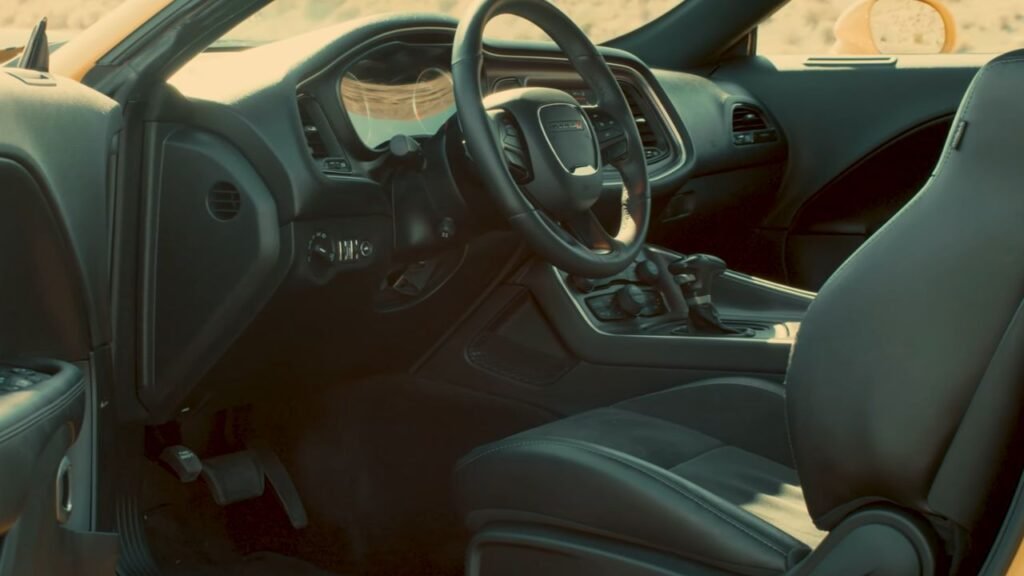
My only complaint about the 392 cars is the tune of the throttle and brake pedal, how quickly they respond to your feet. A little overdone, I think it’s to make them feel like they have explosive power delivery, but honestly, they don’t need any help.
The result is that both the naturally aspirated Charger and Challenger can feel a little jumpy off the line. If you’re coming to one of these cars from a less powerful machine, you may need a little practice to get the hang of driving it smoothly.
Racing and Fun
Okay, okay, enough talk. Let’s race. Oh, I guess somebody wants to race. Don’t have to ask me twice. Drag racing is one of the easiest ways to get into motorsports. It’s a simple concept: line up at a starting line, wait for the lights or the flag, and then floor it for a set distance, usually an eighth or a quarter of a mile, and see who gets to the finish line first.
As you get more into it, you’ll learn there are many challenges to being the first car across the line, but that learning process is a blast.
Seriously, it is so fun. Both Charger and Challenger make good cars to take to the track. They’re fast enough to be fun without any changes – like straight off the dealership right to the drag strip, and you can go fast.
Any experienced drag racers out there are probably thinking you don’t need to do a burnout on street tires, and they’re right. You don’t need to do a burnout on street tires. The whole point of doing a burnout, spinning the tires until they make smoke, is to heat up the rubber on tires that are specifically designed for racing and that makes them stickier. When you do it on street tires, you mostly just wear down your tread. But it’s super fun, so we’re gonna do it anyway.
That never gets old. So what do you need to go racing? Well, most tracks have similar rules. They’re going to want you to wear long pants – no racing in your underwear – and close-toed shoes. No flip-flops. And then if your car is fast enough, which this one is, you’re going to need a helmet. It’s best to check with your local track before you show up and find out what their requirements are.
A lot of the trick to going fast in a street car at one of these race tracks is how you leave the line. You can’t just floor it in a powerful car because you’ll spin the tires and you won’t go anywhere. So when I was talking to Travis about it earlier, I told him, think about your launch the way that you would hand a baby to someone.
Right, like you’re not gonna shove a baby at somebody, you’re gonna hurt the baby. You’re gonna gently hand the baby over, and you’re gonna hold that baby until you’re sure that someone else is holding it.
That’s how I think about the traction when I’m trying to drive a street car. I’m just gonna hold that real gentle until I know that the track will hold it, and then I floor it, and then my baby is safe.
Conclusion
Both the Charger and Challenger offer exhilarating experiences, whether you’re looking for a daily driver or a track day star. With their powerful engines, customizable features, and rich muscle car heritage, you can’t go wrong with either.
Choose the Charger for a more family-friendly, under-the-radar option, or go for the Challenger if you crave sporty looks and muscle car history. Either way, you’ll join a fun community of modern muscle car owners.
Have you ever been racing? Tell us about it in the comments & For more article like this, turn on the notifications.
RELATED POSTS
View all
